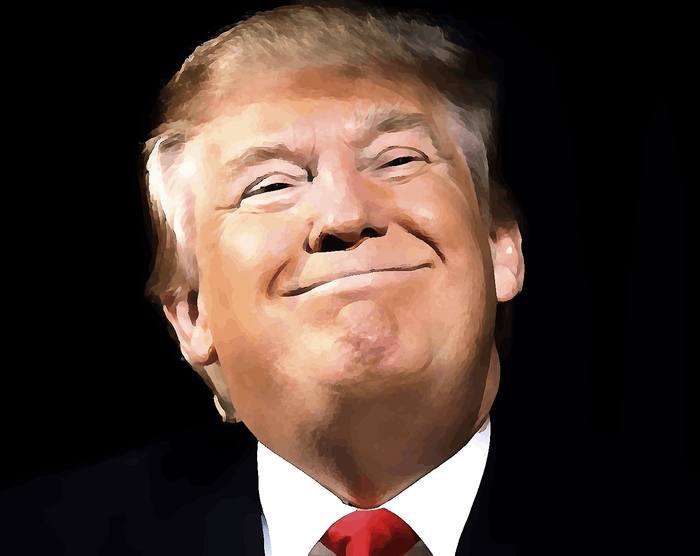
For a handful of Trump's advisers, however, there is a third strategic benefit to killing Soleimani: Call it regime disruption. Trump and top U.S. officials have said repeatedly that the U.S. does not seek regime change in Iran, but they have also in recent days cheered on Iranian protesters who have flooded the streets blaming their country's supreme leader for the downing of a Ukrainian passenger jet.
The case for disruption is outlined in a series of unclassified memos sent to former National Security Advisor John Bolton in May and June 2019 — the period when Iran's latest round of escalations began in the Persian Gulf.
Their author, David Wurmser, is a longtime adviser to Bolton who then served as a consultant to the National Security Council. Wurmser argues that Iran is in the midst of a legitimacy crisis. Its leadership, he writes, is divided between camps that seek an apocalyptic return of the hidden imam, and those that favor the preservation of the Islamic Republic founded in 1979. All the while, many Iranians have grown disgusted with the regime's incompetence and corruption.
Wurmser's crucial insight, and one that goes some way toward explaining the Soleimani strike, is that Iran's leaders expect America to respond to its provocations in a measured and predictable fashion. "Iran has always been careful to execute its ambitions and aggressive aims incrementally to avoid Western reactions which depart from the expected," Wurmser argues. "In contrast, were unexpected, rule-changing actions taken against Iran, it would confuse the regime. It would need to scramble," he writes. Such a U.S. attack would "rattle the delicate internal balance of forces and the control over them upon which the regime depends for stability and survival."
Such a moment of confusion, Wurmser writes, will create momentary paralysis — and the perception among the Iranian public that its leaders are weak.
Wurmser's memos show that the Trump administration has been debating the blow against Soleimani since the current crisis began, some seven months ago. In addition to Bolton, the memos were also shared with senior State Department officials. (I obtained them through a source who supports the Soleimani strike.)
In May, Iran began sinking oil tankers in response to Trump's decision to tighten sanctions on Iran's oil. In June, Iran downed a U.S. surveillance drone. It would later launch drones and missiles on Saudi Arabia's largest oil refinery facility. The U.S. nearly responded to the shooting down of the drone in June with attacks of its own, but Trump called off the strike 10 minutes before missiles were launched.
In May Bolton asked the Pentagon and the intelligence community to generate new military options against Iran, including an option to strike Soleimani. U.S. spy agencies had already begun mapping Iranian outposts in the Middle East and tracking locations of Islamic Revolutionary Guard commanders. But the tension between Bolton and the Defense Department was significant, according to U.S. officials. The Pentagon bureaucracy opposed military escalations. Bolton and other hawks disagreed.
After Iran downed the drone, Wurmser advised Bolton that the U.S. response should be overt and designed to send a message that the U.S. holds the Iranian regime responsible, not the Iranian people. "This could even involve something as a targeted strike on someone like Soleimani or his top deputies," Wurmser wrote in a June 22 memo.
In these memos, Wurmser is careful to counsel against a ground invasion of Iran. He says the U.S. response "does not need to be boots on the ground (in fact, it should not be)." Rather, he stresses that the U.S. response should be calibrated to exacerbate the regime's domestic legitimacy crisis.
At the time, Wurmser's advice was largely ignored. The U.S. responded through economic means to Iran's provocations until December. Trump chose instead to offer Iran negotiations while also warning its leaders that the U.S. would respond militarily if an American were to be killed in an Iranian-sponsored attack.
That is precisely what happened, and the U.S. eventually responded by killing Soleimani. For now, it looks like Wurmser's analysis has proved correct. As the New York Times has reported, the Iranians sent a message following a volley of missile strikes to another Iraqi base last week that they would not escalate further for the killing of Soleimani.
Wurmser predicted that many Iranians would welcome a strike on a senior commander such as Soleimani. "Iranians would both be impressed and potentially encouraged by a targeted attack on symbols of repression," he wrote. That remains to be seen. What is already evident, however, is that in the aftermath of Soleimani's death the Iranian leadership has committed a series of errors — from shooting down the Ukrainian jet to lying about it afterward — that has weakened its position at home and abroad.
Sign up for the daily JWR update. It's free. Just click here.
(COMMENT, BELOW)
Eli Lake is a Bloomberg View columnist who writes about politics and foreign affairs. He was previously the senior national security correspondent for the Daily Beast. Lake also covered national security and intelligence for the Washington Times, the New York Sun and UPI, and was a contributing editor at the New Republic.


 Contact The Editor
Contact The Editor
 Articles By This Author
Articles By This Author